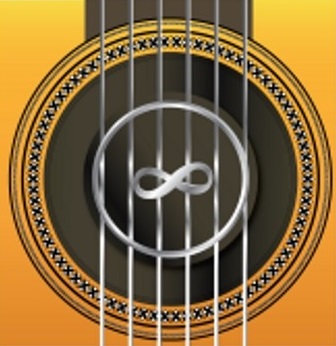When we let go of our battles and open our hearts to things as they are, then we come to rest in the present moment. This is the beginning and the end of spiritual practice. Only in this moment can we discover that which is timeless. Only here can we find the love that we seek. Love in the past is simply memory, and, love in the future is fantasy. Only in the reality of the present can we love, can we awaken, can we find peace and understanding and connection with ourselves and the world.
from: A Path with Heart
by: Jack Kornfield
HOW TO DANCE LIKE A HAPPYMAN
The Work Of Gabriel Roth
http://www.gabrielleroth.com/
By Happy Ron Hill
By Happy Ron Hill
People say to The Happy Man, “hey Happy Man, where did you learn to dance like that?” or “Happy Man why are you such a ‘natural’ dancer? ” or “Happy Man why do you always refer to yourself in the third person?” I won’t answer the third question but the first two are the subject of this article.
In 1995 I went to a series of workshops based upon the work of Gabriel Roth who taught dance in a different way then other workshops. These workshops were among the most powerful experiences in my life. They literally change me from someone who had many physical and emotional issues that preventing me from dancing to someone who loves to dance at every opportunity.
Most dance instruction is based upon learning some sort of structured dance, IE line dancing or salsa or the like. And yet most of the time people who dance simply do so in a free form kind of way. Most people seem to think that you can either do this or can’t.
The biggest problem most people have with dancing is their fears, fears of looking silly -yet part of learning to dance is to enjoy looking silly). Another fear is not doing it “right” – yet with free flowing dance there is no “right” or wrong way of doing it as long as you respect the people around you. As a matter of fact the truth the joy of real dance is letting go of the need to not look silly or the need to do things “right.” The other big fear is of course the high schoolish “will anyone dance with me,” the truth is so that if you are comfortable dancing and you treat people with respect you will often find yourself very much in demand as a dancer. In most social situations there is quite often a relatively small percentage of people that are comfortable dancing and also respectful and if you fit both you may be surprised at how many people want to dance with you.
Gabriel’s workshops are about learning to relax yourself so that you can dance dance and as well as about giving you some feeling as what do when you dance. I use the word “feeling as to what to do” because most dancing is about the feeling not about learned pre-packaged moves.
Two specific concepts that are very powerful about the workshops are the idea of dancing with specific parts of your body and the idea of the “5 rhythms.” These ideas can be used without having to go to a workshop and can be used to answer the question “what do I do on the dance floor.”
DANCING WITH SPECIFIC PARTS OF YOUR BODY – People often feel confused about to do with themselves while dancing. Gabriel suggests focusing on a specific part of your body and “dancing with your…” elbows, neck, shoulders, knees, feet, butt, etc. . You can then randomly switch which part you focus on. This has the effect of reminding us uptight people to be in our bodies, to break patterns of tightness that make us uptight when dancing.
THE 5 RHYTHMS – She suggest that there are 5 basic rhythms of movement, these are not dance moves or patterns to learn to do in a specific way, as a matter of fact everyone will have their own way of doing these, the speed and patterns of which can and should change from moment to moment. The idea is to get your imagination going as to different ways of moving. Being in a room with 100 people all doing similar, but unique to them, movements can be a very powerful experience. The 5 rhythms are (r
Flowing – smooth movements
Staccato – jerky movements,.
Chaos – no form whatsoever.
Lyrical – think the movements a conductor or puppeteer would make with his hands.
Stillness – simply not moving
And of course you can combine the 5 rhythms with the idea of dancing with a specific parts of your body, so you can do “staccato” movements with your elbows or whatever.
Seya on the dance floor!
